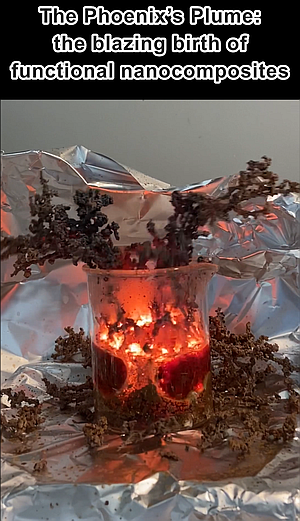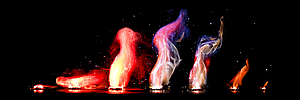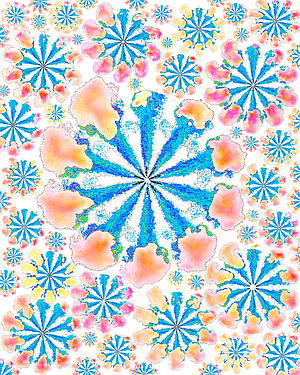
The Phoenix’s Plume
This video shows the solution combustion synthesis of iron-based alumina nanocomposites, which are promising catalysts for clean hydrogen production from fossil fuels. Starting from an aqueous solution of iron nitrate, aluminum nitrate, and an organic fuel, the self-sustaining exothermic reaction yields such materials. The choice of the fuel has a remarkable effect on the combustion behavior and the products’ properties. In this video, glycine was used as the fuel resulting in the “volcanic” reaction.
Zachary Chanoi, Victoria Reyes, Evgeny Shafirovich (University of Texas at El Paso)

Martian Based Propellant Plume
The soil of Mars contains a blend of perchlorates, perhaps 0.5-1% in some locations. These perchlorates could potentially serve as an in situ resource for oxidizers in a solid rocket propellant. Calcium and magnesium perchlorates are estimated to occur in a 60-40 split based on Phoenix Lander measurements. A solid propellant can be fabricated combining these perchlorates with aluminum and a polymeric binder. This is an image sequence of a sample igniting and then burning. Initially, a reddish-orange flame dominated by the calcium is observed, followed by a multicolored red, white, and blue flame at the apex. This photo was taken on a Sony α7 III at f/22 with an exposure time of 1/8000 s.
Alexander C.C. Hoganson, Chase M. Wernex, Hetal Rathore, Steven F. Son (Purdue University)

Combustion Snowflakes
This collection of images demonstrates the shot-to-shot variability of combustion and sooting behavior among injections at identical conditions. Each snowflake shows the autoignition of an injection of n-heptane, in 0.1ms intervals, clockwise from ignition (at top/vertical). Combustion was simultaneously recorded by Rainbow Schlieren (in color), OH* chemiluminescence (BW camera, shown in yellow), and two-color pyrometry (BW, shown in magenta). The blades of the snowflakes are composite images overlaying OH* and two-color intensities onto the jet seen via RSD. One reaction formed a perfect question mark (?) – can you find it?
Allen Parker, Ajay Agrawal, Joshua Bittle (University of Alabama)